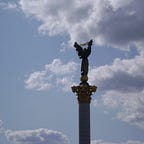Just some notes I made as I read these. Putting them here because I didn’t know what else to do with them.
Leskov was a contemporary of Dostoevsky, Tolstoy and Chekhov but is rarely — in the west, at least — given their kind of elevated status. The animosity of his fellow writers was an important reason for his lack of popularity in his lifetime. His heavily religious themes made his works anathema to the Soviets after his death.
By all accounts, Leskov was a spectacularly unpleasant man and the accounts Donald Rayfield relates in his concise and wise introduction are fascinating. Leskov treated his own children and stepson abominably, poured salad cream over Chekhov’s head, ‘alienated friends and family’ and ended his life unloved and unremembered.
This is a collection of mainly new translations of Leskov’s works which allows an insight into his breadth and range. They take in subjects such as engineering, religion and international relations. A couple of the stories — ‘Lady Macbeth of Mtsensk’ and ‘The Steel Flea’ — are fairly well known to fans of Russian literature in English translation. I hadn’t quite appreciated the very black humour of the former in my previous readings of it.
In several of these stories, Leskov uses a framing device, introducing a location and allowing a narrator to tell the story to a group of listeners. ‘The Sealed Angel’ is one of these. It reads at times like a modern action film — there’s a scene in which one character is forced to cross the Dnieper on an unfinished bridge by tightrope-walking across the chains. There’s lots of ‘interesting’ stuff about the production of religious icons.
Another framed narrative is The Enchanted Wanderer: a novel-length piece. Here, an audience listen to the life story of Ivan ‘Bighead’ Fliagin, the Wanderer of the story’s title, who is cursed to live a transient life, full of perils and heartache, until he joins a monastery. Scenes of astonishing violence are really prominent in his story. Ivan witnesses and engages in a variety of examples of animal cruelty: a horse is punched until its brains come out of its nostrils; a cat is whipped to the point of death and its tail is cut off. There’s one particularly horrible scene in which Ivan’s heels are sliced open and bristles are inserted into the wounds, rendering him incapable of escape. This is done with a strange kind of tenderness. His Tatar captors love him and want him to stay.
The plot might seem episodic and meandering but images and ideas are echoed and repeated. There are so many suicides and attempted suicides, it’s difficult to keep count. The story often touches on the way in which one person can take on the suffering of another. There’s a real sense of thematic cohesion.
Ivan’s audience listen to his story with rapt attention. There are more than a few hints in the text which suggest that we as readers should be less credulous.
The final story, adapted from a ‘seventeenth century collection of Byzantine moral tales’ is possibly my favourite. Like the others, it contains scenes of extreme violence but, like the others, the warmth warmth and compassion of the story is impossible to overlook.
Despite the wretched, seemingly sociopathic life of their author, it’s the humanity of these stories which is their standout quality. I approached this volume with some trepidation because I hadn’t really enjoyed Leskov’s writing before. My mind has certainly been changed. Funnier than Dostoevsky and lacking the didactic tone of Tolstoy, Leskov’s work is mystical, idiosyncratic and deeply weird. More please.
